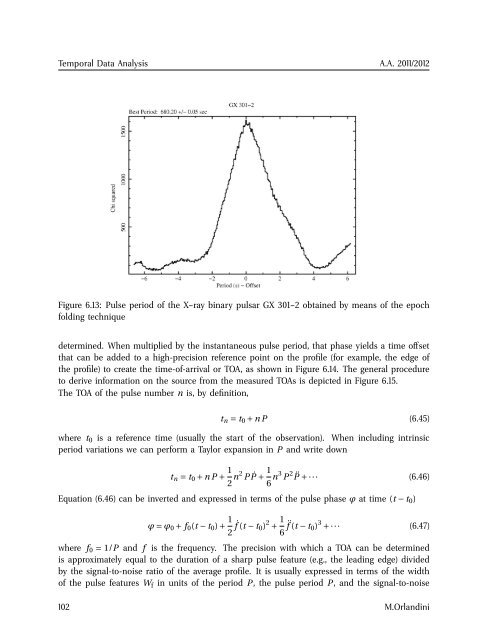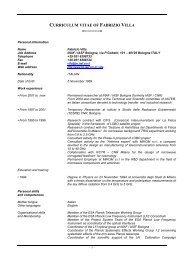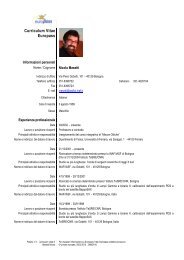booklet format - inaf iasf bologna
booklet format - inaf iasf bologna
booklet format - inaf iasf bologna
Create successful ePaper yourself
Turn your PDF publications into a flip-book with our unique Google optimized e-Paper software.
Temporal Data Analysis A.A. 2011/2012<br />
Figure 6.13: Pulse period of the X–ray binary pulsar GX 301–2 obtained by means of the epoch<br />
folding technique<br />
determined. When multiplied by the instantaneous pulse period, that phase yields a time offset<br />
that can be added to a high-precision reference point on the profile (for example, the edge of<br />
the profile) to create the time-of-arrival or TOA, as shown in Figure 6.14. The general procedure<br />
to derive in<strong>format</strong>ion on the source from the measured TOAs is depicted in Figure 6.15.<br />
The TOA of the pulse number n is, by definition,<br />
t n = t 0 + n P (6.45)<br />
where t 0 is a reference time (usually the start of the observation). When including intrinsic<br />
period variations we can perform a Taylor expansion in P and write down<br />
t n = t 0 + n P + 1 2 n2 PṖ + 1 6 n3 P 2 ¨P + ··· (6.46)<br />
Equation (6.46) can be inverted and expressed in terms of the pulse phase ϕ at time (t − t 0 )<br />
ϕ = ϕ 0 + f 0 (t − t 0 ) + 1 f ˙(t − t 0 ) 2 + 1 f ¨(t − t 0 ) 3 + ··· (6.47)<br />
2<br />
6<br />
where f 0 = 1/P and f is the frequency. The precision with which a TOA can be determined<br />
is approximately equal to the duration of a sharp pulse feature (e.g., the leading edge) divided<br />
by the signal-to-noise ratio of the average profile. It is usually expressed in terms of the width<br />
of the pulse features W f in units of the period P, the pulse period P, and the signal-to-noise<br />
102 M.Orlandini

















